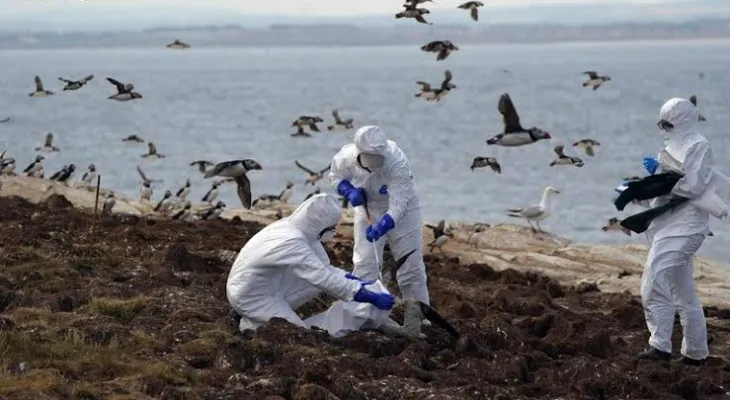
Wild birds develop immunity to avian influenza, 'encouraging sign' amid deadly pandemic
Scientists say there are "encouraging signs" that some birds are developing immunity to bird flu and the deadly virus may kill fewer birds this winter. There is.
The current H5N1 bird flu outbreak that began in 2021 is the worst on record and is thought to have killed millions of wild birds. Mortality among wild birds appears to be very high, but it was unclear how many survived and developed immunity.
Preliminary research by a consortium of scientists has confirmed that her two populations of seabirds have developed immunity. They took blood samples from boobies in Bassrock, Scotland, which was hit hard by bird flu in 2022, and found that 30% of them had antibodies.
The UK is home to two thirds of the world's gannets, and ornithologists are particularly concerned about this species. Bass Rock is the largest colony in the world. Researchers also tested shags and found that about half of them were immune.
"This is the first evidence (of immunity) in seabirds," said Professor Ian Brown, head of virology at the Animal and Plant Health Authority (APHA).
This study was carried out by the FluMap consortium led by APHA, and its key findings were published in the International Ornithological Sciences Published in the magazine Ibis. .
Lots of turkeys in the barn
Turkeys in the barn. Last year, Britain's worst outbreak of bird flu forced poultry farms to keep their animals indoors, but this year the number of cases has fallen significantly. Photo: Nathan Stirk/Getty
Sample size was small, about 30 birds per population. Brown said it's very difficult to catch wild birds and take blood samples (which is one reason it hasn't been done before). However, the results confirm observations by conservationists that some birds, particularly gannets, appear to have developed immunity, and their normally blue irises turn black after surviving an infection.
Because avian influenza changes rapidly, it is unclear how long immunity lasts and the proportion of birds that survive the initial illness. Seabirds typically produce only one or two offspring per year, slowing population recovery. Therefore, there are still concerns about the long-term effects.
Researchers now want to test more wild birds, especially farm birds, to learn more about how the virus enters chicken houses. Researchers say the virus only spreads over short distances (less than 10 meters), so it is unlikely to spread through the air between farms. This suggests that transmission occurs primarily through wild birds.
Researchers are now waiting to see what will happen this winter. October is a month of uncertainty due to the influx of migratory birds and the new variants they may bring with them.
Between 1 October and 28 October 2022, there were 58 confirmed cases in poultry in the UK. So far this year we haven't had anything in October. Globally, there are very few cases in poultry in Northern Europe, and only a handful of cases in wild poultry.




















